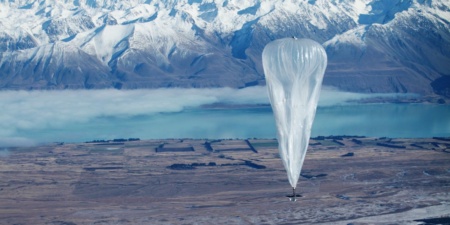
In early 2021, Alphabet (Google’s parent holding) abruptly shut down one of its most interesting experiments, Loon, after 8 years of development – an ambitious project designed to provide Internet access to remote regions through a network of balloons drifting in the stratosphere at an altitude of 20 km. And now Google seems to have come up with a plan to save Loon – it can be continued and reborn in a new promising project by Aalyria Technologies, which involves the use of lasers for data transmission.

The head of the company, Chris Taylor, rather vaguely outlines the main mission of Aalyria: “The union of everything that exists now, with everything that will exist tomorrow.”
Specifically, having received ten years of assets and patents from Google in exchange for a minority stake in the company, Aalyria will work on two areas: Tightbeam laser communication system and Spacetime cloud software.
The first technology, previously used at Google called Project Sonora, will provide data transfer between objects using light beams, and connection management will rely on Spacetime, known at Google as Minkowski technology. It was used to predict the new location of the Loon balloons in order to maintain a stable connection. But now Spacetime’s technology has been adapted to support a handoff between a Tightbeam ground or satellite station and a moving object, such as an airplane or boat.
At Aalyria, the experiments carried out confirm the team’s ambitious plans to provide Internet with weak infrastructure. Research shows data can be sent at up to 1.6 TB per second, many times faster than current technologies.
Despite strong competition from such market giants as Globalstar (Apple’s partner in the recently announced SOS function via satellite), SpaceX and T-Mobile, Aalyria was able to attract large investors, including the US Department of Defense. Perhaps opening a second wind for a team as part of a startup will provide high-speed coverage around the world, even in the most remote corners of the planet.
Source: Bloomberg and The Verge






